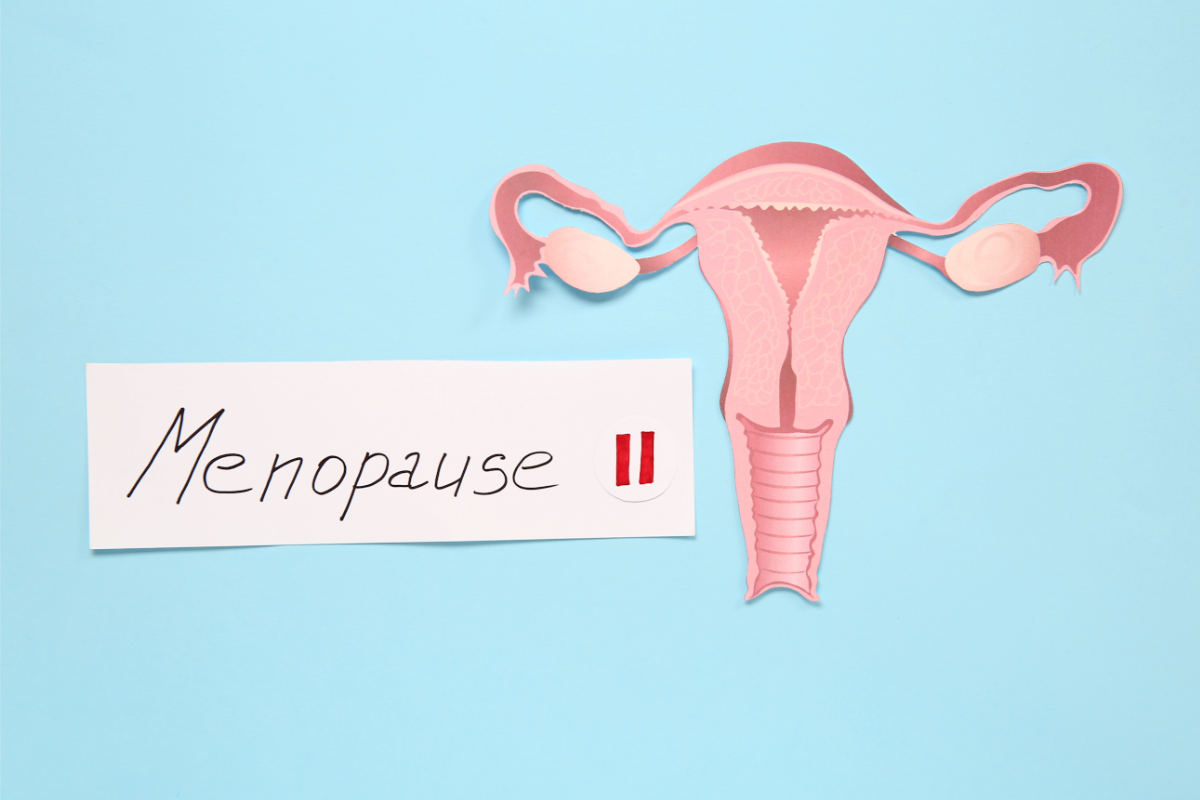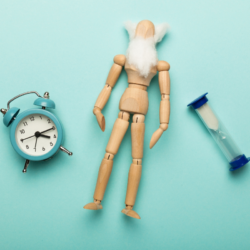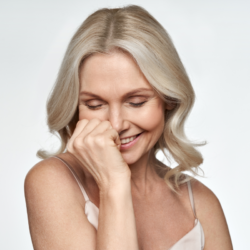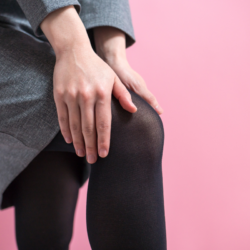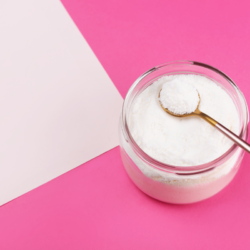Faced with the menopause and its sometimes confusing symptoms, many women are looking for ways to manage this transition without resorting to medication. The following article offers a comprehensive overview of natural methods and physical exercises that promise to relieve hot flushes and improve general well-being without relying on hormones. We explore alternatives proven by scientific research, adapted to the daily life of every menopausal woman, with the aim of maintaining a high quality of life during these crucial years.
What is the Menopause?
The menopause is not simply an event, but a gradual biological process that marks the end of a woman’s reproductive period. This major turning point in a woman’s life generally occurs between the ages of 45 and 55. Biologically, the menopause is characterised by the cessation of oestrogen and progesterone production by the ovaries. This hormonal decline signals the end of menstrual cycles and fertility.
However, this natural process is far from linear or uniform. It varies considerably from one woman to another, both in its timing and in its manifestations. The period leading up to the menopause, known as the perimenopause, can last several years, during which hormone levels fluctuate, leading to a series of physical and emotional changes.
What are the symptoms of the menopause?
The symptoms of the menopause are many and varied, but hot flushes are among the most emblematic and most frequently reported. These sudden episodes of intense heat can occur at any time, day or night, often accompanied by sweating, redness and an accelerated heart rate. Although generally benign, these hot flushes can be extremely uncomfortable and significantly disrupt daily life, particularly sleep and work activities.
In addition to hot flushes, other common symptoms of the menopause include sleep disturbances, vaginal dryness, mood swings and weight gain. Hormonal changes can also affect bone health, increasing the risk of osteoporosis. In addition, this period of transition can be accompanied by feelings of sadness or anxiety about the physical changes and the transition to a new stage in life.
It’s important to stress that every woman experiences the menopause differently. For some, the symptoms may be mild and manageable, while for others they may be intensely disruptive. In all cases, a clear understanding of these symptoms and their implications is crucial to finding the most appropriate management strategies and maintaining optimum quality of life during this transitional phase.
Muscles: The best medicine for the menopause
The menopause, although natural, brings with it hormonal changes that can affect women’s physical and mental health. Recently, attention has focused on physical exercise, particularly strength training, as an effective way of managing menopausal symptoms without resorting to hormones. Studies included in recent research show promising results for the effectiveness of these exercises.
Characteristics of strength exercises
Most studies have focused on polyarticular exercises involving both arms and legs. Fitness machines were used in five studies, while one used a weighted waistcoat and two others used elastic bands. An interesting aspect was the use of virtual reality for pelvic floor muscle strength training, where pelvic movements were combined with trunk control and abdominal activation. Other studies focused on specific exercises such as jumping or leg strength training (gluteus medius, quadriceps and calves). All these interventions included a warm-up to prevent injury and were supervised, with the exception of one.
Session duration and intensity
The duration of the sessions varied considerably, ranging from 90 minutes in some studies to 8-9 minutes in others. This diversity shows that strength exercise programmes can be flexible and adapted to individual needs.
Significant results of strength exercises
Several studies have measured leg extension strength, using a dynamometer. The results were statistically significant in some, indicating an improvement in muscle strength. Similarly, one study showed significant results in terms of bone density and knee cartilage health. Another notable point was the improvement in pelvic floor muscle strength, with significant differences in terms of muscular endurance.
Impact on physical activity and bone density
Physical activity was assessed using various scales, revealing significant improvements in several studies. Femoral bone density, measured by X-ray absorptiometry, also showed improvements in some studies.
Hormonal and metabolic changes
Blood samples were taken to study hormonal and metabolic changes. Significant results were observed in some studies, particularly with regard to levels of growth hormones, insulin-like growth factor 1 and other inflammatory factors.
In conclusion, strength exercises are proving to be a promising method of improving menopause-related symptoms. These exercises can help improve muscle performance, physical activity and bone density, as well as responding to hormonal and metabolic changes. The choice of exercise and equipment can vary, offering flexibility and adaptability to individual needs and preferences. This holistic, non-hormonal approach offers women a powerful way forward. It helps them navigate through the challenges of the menopause. It helps them do so with strength and resilience.
Nutraceuticals and phytotherapy to reduce hot flushes, without hormones
In the panorama of natural alternatives to the menopause, phytotherapy occupies a place of choice, offering natural solutions to alleviate hot flushes without resorting to hormones. A recent study highlights the effectiveness of an innovative combination of plant extracts, each acting on a different target to combat this emblematic symptom of the menopause.
Which plants can help reduce menopausal flushes?
Research has focused on the rhizome of Glycyrrhiza glabra, known for its soothing properties,Actaea racemosa, appreciated for its positive influence on the activation of oestrogen receptors, and the aerial parts of Hypericum perforatum, or St John’s Wort, acclaimed for its antioxidant properties. Then there’s the seed oil of Oenothera biennis, or evening primrose, known for its inhibitory action on the prostaglandin D2 (DP1) receptor, reducing the vasodilation responsible for hot flushes.
Herbal treatment for hot flushes
The study showed that each extract, thanks to its phytochemical-rich composition, contributes to a specific biological response: Actaea racemosa favourably stimulates the oestrogen receptor, Hypericum perforatum stands out for its highest antioxidant capacity, while evening primrose oil effectively inhibits the DP1 receptor. This triple combination, in optimal doses, offers a multitasking targeted therapy. It represents a new strategy for reducing hot flushes in post-menopausal women.
The synergy of these plant extracts offers a multifaceted therapeutic approach. It targets oestrogen-like activity and high antioxidant potential. The combination also inhibits vasodilatation caused by prostaglandins. It is therefore an integral strategy against hot flushes.
This breakthrough marks a significant advance in the field of nutraceuticals. It reinforces confidence in the efficacy and safety of natural products. The aim of this development is to improve the quality of life of women after the menopause.
It is crucial to continue exploring these therapeutic avenues. We need to ensure long-term safety and efficacy. This will enable us to offer women hormone-free solutions that respect their bodies and their needs during the menopause.
Natural alternatives to reduce hot flushes without medication
The menopause, a natural stage in a woman’s life, can bring with it a range of symptoms that affect daily well-being. For those who prefer to avoid hormone replacement therapy, a number of natural alternatives offer solutions that are both effective and attractive.
Are soy isoflavones effective against hot flushes?
Soy isoflavones, found in soya-based products, are renowned for their potential to reduce the frequency and severity of hot flushes. Studies have shown encouraging, if slightly variable, results. These compounds, acting like phytoestrogens, could offer natural relief.
Black Cohosh to reduce menopausal flushes
Black Cohosh, often used in traditional remedies, has been the subject of numerous studies. Analyses such as that carried out in the HALT (Herbal Alternatives for Menopause) study have shown that this plant could help manage the vasomotor symptoms associated with the menopause. Its popularity is explained by its potential action on symptoms without the side effects associated with hormone treatments.
Omega-3: Natural remedy to relieve menopausal symptoms
Omega-3s, essential fatty acids, are known for their benefits to heart health, but also for their potential role in reducing menopausal symptoms. A systematic review has concluded that omega-3 supplements are effective in reducing vasomotor symptoms.
Does diet have an impact on hot flushes?
A balanced diet promotes a healthy weight. Enriched with fruit and vegetables, and limited in processed foods, it can also reduce the vasomotor symptoms associated with the menopause. Adopting good eating habits can be a fundamental pillar in managing menopausal symptoms.
The best supplements for treating hot flushes and night sweats
The menopause marks a turning point in a woman’s life, a time when her body undergoes a metamorphosis. The menopause is characterised by symptoms such as hot flushes and night sweats. These symptoms frequently disrupt women’s daily well-being. Although hormone treatment is a frequently adopted method,other options exist. For women who prefer an alternative, non-hormonal solutions are available.
Homeopathy and oligotherapy to reduce night sweats
Homeopathy offers solutions such as ACTHÉANE and LACHESIS COMPLEXE No 122, renowned for their gentle, personalised approach. In oligotherapy, products such as OLIGOSOL ZIN-CUIVRE and OLIGOSTIM ZIN-CUIVRE are used to balance trace elements in the body, helping to manage symptoms more effectively.
Is beta-alanine effective in reducing hot flushes?
ABUFÈNE is formulated with Beta alanine, an amino acid known to reduce hot flushes. However, its effectiveness may vary from one individual to another. In phytotherapy, FEMELIS offers a natural option, exploiting the benefits of plants.
The menopause is a natural and unavoidable phase in a woman’s life. A range of alternative solutions are available to help women manage the symptoms of the menopause. They can honour their well-being while respecting their personal preferences.
References :
- J Clin Med. 2023 Jan; 12(2): 548.. Published online 2023 Jan 9. doi: 10.3390/jcm12020548. The Efficacy of Strength Exercises for Reducing the Symptoms of Menopause: A Systematic Review
- Nutr Bull . 2023 Mar;48(1):43-65. doi: 10.1111/nbu.12607. Epub 2023 Feb 15. The role of diet in managing menopausal symptoms: A narrative review
- Altern Ther Health Med . 2010 Jan-Feb;16(1):36-44. Efficacy of black cohosh-containing preparations on menopausal symptoms: a meta-analysis
- Molecules. 2022 Feb; 27(4): 1221. Novel Evidence-Based Combination of Plant Extracts with Multitarget Mechanisms of Action for the Elimination of Hot Flashes during Menopause

